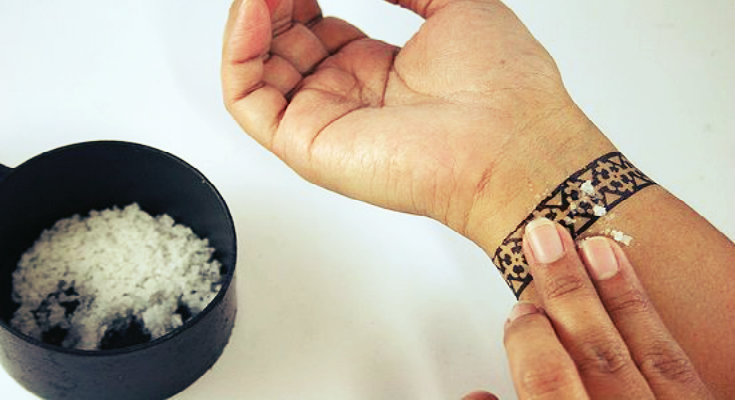-
9 December 2019
Extreme Non-Laser Tattoo Removal Methods to Avoid

Tattoo removal has become as prevalent as getting inked in the last few years. There have been multiple cases of instant regret and several situations where people have taken the decision after years of getting the art on their skin.
Noticeably, there is a significant chunk of population which dislikes the tattoo they sport. In recent years, technology has made it possible to get the ink eliminated with the help of laser tattoo removal in Melbourne.
However, people still resort to extreme non-laser tattoo removal procedures which should be avoided at all costs. Let us take a look at the risks and dangers involved with these methods.
Dermabrasion is a painful method of scraping or sanding down the skin with the help of an abrasive device, including a wire brush, a diamond wheel, or sterilised sandpaper. It is conducted after administering local anaesthesia to minimise the pain.
However, it can lead to various problems such as bruising, burning, swelling, permanent scarring, infection and oozing pores. Also, the treated area can take months to heal completely. Dermabrasion is meant for removing the dead skin cells from the surface to bring out refreshed skin with a glow.
However, when it is utilised for tattoo removal, it has to remove a lot of epidermis to reach the dermis, and this causes various skin problems.
It utilises salt and water along with an abrasive device to remove the upper layers of the skin. The salt is rubbed with force on the skin to peel it off, followed by the application of antibiotic cream and covering the area with sterile gauze.
The whole procedure is repeated after a few days and is quite painful. It ends up leaving a scar on the skin and may not even reach the dermis where the pigment is stored. It can also cause the same side-effects as dermabrasion, such as burning, swelling, itching, bruising, bleeding, skin discolouration, etc.
Some people go to the extent of using acid to get rid of the tattoo, but this is a highly dangerous process and should be avoided altogether. The standard methods used in this treatment include the TCA peel wherein the TriChloroacetic Acid present in the chemical peel burns the outer layer of the tattooed skin.
It acts as a bleaching agent and only lightens the skin and doesn’t reach the ink. Another method is Glycolic Acid Peel which is made from tartaric, lactic and malic acid and works by burning the skin to remove the ink.
However, it is not able to achieve the desired result and can lead to problems like extreme pain, depigmentation and scarring. Some other people take the third route and get acid injections. The injected acid expels the ink from the deeper layer and brings it on the top.
This is followed by scabbing and falling of the skin, which takes the ink along with it. This method has its share of problems like skin infections, scarring and pigmentation.
It is one of the dreaded procedures where a surgeon uses a scalpel to cut deep into the skin and remove the ink. It involves stitching back of the wound and is quite painful.
Naturally, most people prefer laser tattoo removal than this technique which leads to infection, bruises, thickened skin, permanent scars and discolouration of the skin. Moreover, laser works efficiently on the face and neck, which is often considered sensitive.
Many people fall for this treatment as it is a pain-free method of tattoo removal which takes a long time to show results. These creams are made from a variety of chemicals, such as hydroquinone, TCA, alpha arbutin, etc.
They are only able to make the tattoo lighter and do not reach the deeper layer to remove the ink. Also, this method has its own set of side-effects, including burning sensation, infection, swelling, scabbing and itching.
The process involves removing the upper layer of skin through the use of a freezing agent. It is a painful procedure and can be performed after giving local anaesthesia to the patient.
The freezing agent leads to frostbite, and this layer is then sanded off to remove the tattoo. It leads to scarring in most cases, and the results are not as effective as laser tattoo removal. It can also harm the surrounding tissues in the affected area.
Now that you have understood the problems related to these corrective measures, you must know about the best way to solve the problem. Laser tattoo removal in Melbourne is the perfect way to get the tattoo permanently removed from the dermis with minimal pain and negligible side-effects.
An experienced and trained practitioner can smoothly perform the non-invasive method, which is spread over a few sessions and brings out the best results.
You do not want to end up with an apparent skin problem when you go for a tattoo removal treatment. So instead of wasting your time, money and energy on the extreme non-laser methods, you must opt for the proven and tested laser tattoo removal method.